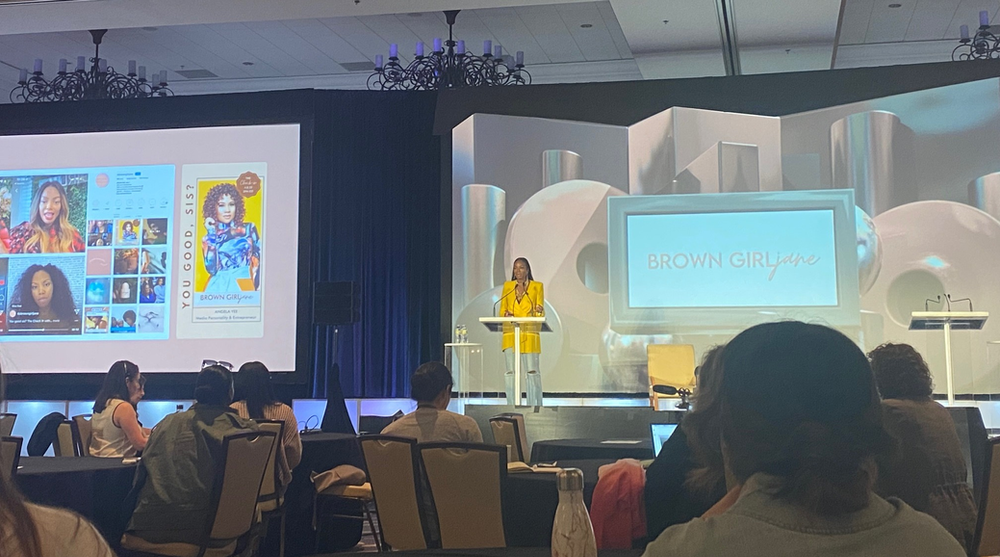
The Mars Agency left the ANA Brand Masters Conference in Carlsbad, California, earlier this month with a renewed sense of purpose, so to speak.
Internally, one definite highlight of the event was formally receiving a Reggie Award for the “We Speak Laundry” campaign we developed with Henkel for Walmart during a special dinner gala. But we also left the three-day conference with plenty of food for thought, courtesy of industry experts from product manufacturers, agencies and solution providers who all seemed to agree on the need for brands to better and more deeply engage with both consumers and employees.
Marketing consultant Simon Bradley advised brands to refresh their strategic thinking entirely by moving beyond the classic 4 Ps (Product, Price, Place and Promotion) to embrace these 4 Es:
Evangelism: Driving engagement that inspires consumers to share and even advocate for you.
Experience: Moving beyond the typical marketing focus on the tangible product to consider every aspect of brand interaction.
Exchange: Going beyond price to address the new value equation, which includes time, convenience, and personal data.
Every place: Delivering the brand experience wherever your consumers are. (Incidentally, several speakers recommended live shopping events and other social commerce activity as an ideal place for delivery these days.)
But if you do plan on sticking with the 4 Ps (and we’re not recommending that you do), you’ll at least need to add a 5th: Purpose. The growing need for brands to establish and stand behind ideals that consumers will admire and support is implied in Bradley’s call for Evangelism, but it was stressed far more directly by other speakers throughout the event.
Author and consultant Jeff Fromm called on brands to remember that “Purpose is a verb. You have to act on it.” Brands who don’t think they know their purpose should revisit their origin story, Fromm suggested.
That need to activate was echoed by Scott Goodson of StrawberryFrog, who noted that consumers can’t join a brand purpose but can join the “movement” represented by activation of that purpose. However, brands must avoid the potential pitfalls involved, which include choosing a purpose that has no connection to the brand’s DNA or is tone deaf to the concerns of its customers or even its own employees.

Tai Beauchamp of Brown Girl Jane
As those pitfalls suggest, authenticity is critical. It’s so important, in fact, that Anheuser-Busch has developed a method of measuring its “ROA” — return on authenticity — because of the impact it is having on consumer loyalty, product purchase and brand advocacy, according to Colleen Kelly, Vice President of Trade Marketing & Industry Relations. For A-B, an “authentic brand” is secure in its purpose and resolves to be transparent and consistent in its messaging and actions.
Similarly, Mondelēz International regularly talks to members of its Gen Z audience to ensure that it can speak to them authentically and keep up with relevant trends, according to Jennifer Mason, Customer Director of Shopper Marketing.
Staying focused — even obsessed — on consumer/shopper motivations should guide strategy: Philips redesigned its entire online brand experience based on consumer feedback and will stop labeling its hair-removal products by gender after analyzing ratings/reviews, according to Lorraine Barber-Miller, Chief Marketing & E-Commerce Officer. “You have two ears and one mouth. Use them proportionately,” advised Kate Ardini, CMO at John Hancock, whose new life insurance vitality program is helping the brand connect more authentically with consumers.
Such outward authenticity can’t be achieved without first gaining the confidence and support of your internal teams. Everyone in the company must understand the why’s, what’s and how’s of the marketing vision, Barber-Miller advised. John Hancock needed to first create an environment that would foster customer obsession, Ardini said.
Many of these themes were brought to life in a final-day presentation from Tai Beauchamp, Co-Founder and Chief Brand Officer of Brown Girl Jane. The wellness-driven brand, which markets plant-based beauty products for women of color, launched in 2020 by building a community that empowered its target audience to feel that they are seen, heard, and understood. This “tribe,” as the company calls it, has been critical to success by providing input on product development.
The key to fostering a true community spirit is authentically engaging with the audience, speaking to them rather than at them, listening to their needs, and responding through action, Beauchamp explained. Nuanced language that reflects a human approach is important: focus groups, for instance, are pitched as “brunches” or “meetups.” Activating the brand purpose — by hosting wellness summits, providing grants to Black entrepreneurs, etc. — is also essential.
The community is also central to Brown Girl Jane’s marketing strategy, which is heavily focused on content through social media, email, micro-influencers and events that help the brand minimize its paid-ad spending.
The sale is no longer the endpoint of engagement between brands and shoppers. Brands need to continue the conversation, validate the purchase, build trust, and establish an ongoing, authentic relationship that will drive brand loyalty. And that will require a stronger brand purpose.
Still wondering about how important brand purpose is to shoppers? Learn what Marilyn uncovered here.
Reporting by: Rebecca Raney, Director of Customer Development; Kylie Wyman, Senior Art Director; Amy Andrews, SVP-Client Leadership; and Jenn Gioffre, EVP-Client Leadership.